I am starting preparations for my next campaign and it will take place in the Greyhawk setting. Since I will be running this campaign using Castles & Crusades, I will be writing a lot about Greyhawk and C&C, the changes, tweaks, and houserules I will be using, as well as the setting itself.
In this first post, I want to give you an introduction to Greyhawk. Current D&D players will recognize the names of famous characters (e.g. Mordenkainen, Tasha, Acererak) who have been featured in recent adventures or given their names to 5e D&D sourcebooks. Many iconic characters also gave their names to popular spells (e.g. Bigby, Drawmij, Evard, Leomund, Melf, Mordenkainen, Nystul, Otiluke, Otto, Rary, Tasha, Tenser). Many creatures found in the 5e Monster Manual (e.g. Liches, Beholders, Umber Hulks, Rust Monsters) and multiple magical items and objects of wonder (e.g. Bag of Tricks, Portable Hole, Deck of Many Things, Apparatus of Kwalish) were created for Greyhawk. Some of you who began playing D&D with 5th edition might be surprised to learn that so many of the characters, items, creatures, and spells you use in your D&D campaign ostensibly set in the Forgotten Realms originated and are based in Greyhawk. That’s how iconic these elements are to the game – they have been ported whole cloth into the core of D&D for use by players no matter what setting they choose. I’m not going to talk specifically about Gygax’s creation process and development of the setting. What I am going to talk about is Greyhawk itself, giving a short history of the setting, which I have split into eras, in terms of D&D releases. Later posts will explore the tone and themes of the place as an RPG setting. Without further ado, let’s explore the eras of Greyhawk.
The First Era: Gygax’s Greyhawk
Many, if not most, of you know that Greyhawk is the name of the campaign setting created by Gary Gygax in the 1970s. He used it in his earliest D&D games and published a Greyhawk setting booklet (oD&D Supplement 1) in 1976. By the time Advanced Dungeons and Dragons was picking up steam, fans clamored for a new published Greyhawk set, so it was released in folio form (AD&D; 1980) and then in a boxed set, often referred to as the Gold Box (AD&D; 1983).
The World of Greyhawk folio and subsequent Gold Box were more widely distributed than the 1976 booklet and became the baseline setting product for many a gaming group in the 80s. These products presented a vague framework of the World of Greyhawk to be used and detailed by individual dungeon masters as they ran D&D games for their friends. The word vague here is not a derogatory term – the setting’s vagueness is a feature, not a bug. There was just enough detail to allow people using it to create thousands of hours of fun adventures, but not so much that any individual was constrained by adherence to minutiae. Plus, both the folio and the boxed set came with an enormous, beautifully rendered, 2-piece map of the setting. This map was created by Darlene (artist and calligrapher extraordinaire) based on Gygax’s notes and sketches and it is still hailed as one of the best RPG setting maps produced to date.
Gygax’s Greyhawk outlines a loose timeline of approximately 6100 years of history (only the last 600 or so in any detail whatsoever) on the planet Oerth, during which time three main peoples migrated into the lands in the eastern portion of the continent Oerik. This eastern region is known as the Flanaess and is the part of the world presented as the RPG setting. The Flanaess is a huge region and the guides outline 61 political divisions (kingdoms, Baronies, Duchies, etc), describe all major geographical features (bodies of water, forests, mountain ranges, rivers, etc), designate regional products and alignments, describe 22 deities, provide a weather creation system and encounter tables for all areas, provide stats for the rulers of main political domains, and more. Each of these gets a paragraph or three and provides just enough detail to make this setting your own. The boxed set also provides several adventure hooks to start your campaign and suggested locations for the then-current published adventures set in Greyhawk, of which there were already 21! The timeline of these products ends in 576 CY (common year) Greyhawk time.
Despite my claims of vagueness, this sounds like a lot of information. Admittedly, it is a lot of information, but the intention and prevailing practice was to choose a small portion of the map and make that your area, using only those parts of the books that pertain to your chosen region and creating adventures for your home group. Alternatively, a DM could choose to run the published adventure modules, which further detail specific places and events in the setting. This makes the setting brilliant for DMs looking to spice up their home game, seek to have common setting lore touchstones with other DMs and groups, and at the same time make the game setting and campaign their own.
Other than this real-world reason, what makes Gygax’s Greyhawk so great? The Flanaess is a land in precarious balance. The history laid out by Gygax tells us that The Great Kingdom (previously named the Kingdom of Aerdy), once the largest and most prosperous imperial power in all of Oerik (and which had once declared universal peace across the land), has fallen to only a portion of what it used to be and the Overking himself has gone mad. Evil is rising in other domains as well and the good peoples of the land are besieged on every side. The borders of major holdings are in question and constant skirmishes plague those on the frontiers of their homelands. The Flanaess has not yet succumbed to all-out war, but the tensions between kingdoms are growing and being tested every day. Alliances and trade agreements are forged and broken, and whispered rumors of a mysterious network of elusive spies are pervasive even in the most civilized of cities.
This is the backdrop to your Greyhawk campaign as published in 1st edition D&D. An individual DM can choose to bring war to the forefront, including skirmishes and mass combat in their campaign. Alternatively, a DM can simply play on the tension between neighboring kingdoms and include courtly intrigue and negotiations as a main component of their campaign. A DM could just as easily run dungeon and wilderness adventurers (published or homebrew) paying little heed to the tensions, negotiations, and war aspects of the setting, or having them intersect the campaign very little. And, of course, a DM can choose to include all of the above elements in their campaign. At its heart, Greyhawk is a feudal-like fantasy setting containing as many of the typical fantasy tropes as you like, but flexible enough to leave out any tropes you do not want in your game. Powerful wizards exist, but the average person doesn’t wield magic as an every-day part of their existence. Grand cities can be found there and so can the tiniest hamlet. Huge cavernous dungeons, large castles, and ancient tombs exist there. Kings hold court as members of noble houses vie for more power and prestige. Evil necromancers, strange aberrations, and evil organizations are all to be found (and hopefully defeated!) in Greyhawk.
The AD&D era of Greyhawk gave rise to many of the most iconic adventures produced for D&D. Some you may have heard of are: G1-2-3 Against the Giants, N1 Against the Cult of the Reptile God, S2 White Plume Mountain, T1 The Village of Hommlet, T1-4 The Temple of Elemental Evil, and U1 The Sinister Secret of Saltmarsh. In 1988 TSR released Greyhawk Adventures, a 128 page hardcover Greyhawk supplement. This book brought some descriptions and details to previously undetailed areas, updated the deity entries for several of the Greyhawk gods, introduced new monsters, spells, magic items, and a few new NPCs for your campaign. This book also introduced 0-level character options and several adventure hooks to bring to your campaign.
The Second Era: Greyhawk Wars & Aftermath
In 1989, TSR released 2nd edition Advanced Dungeons & Dragons, and with it came a slew of new Greyhawk products. Several adventures were published in 1989 and so was the City of Greyhawk boxed set, a real gem of a product that detailed the Free City of Greyhawk in all it’s splendor and debauchery. Everything changed for the setting in 1991 when the Greyhawk Wars boxed set was released. This set was an RPG supplement with a mini-wargame inside, and it changed the setting massively. The box came with a 32 page book that outlined the major powers at war, the events that led to all-out war, and detailed the fate of some parts of the Flanaess. It also included scenarios to play out with the included wargame to determine the outcome of the war in your home campaign. The events of the war take place from 582 CY through the end of 584 CY, starting 6 years after the date set in the 1st edition gold box (576 CY). This was a major shake-up to the setting and the Flanaess would forever be changed.
In 1992, TSR followed up the Greyhawk Wars boxed set release with another boxed set, From the Ashes. This box begins with an introduction informing the reader that this product supersedes the 1983 gold box and updates the setting to a grimmer, war-ravaged place. The setting is now in the Spring of 585 CY and the landscape has been devastated. The boxed set contains much of the information found in the original gold box, but updated to account for the wars (and the 2nd edition of the game). The Scarlet Brotherhood has arisen as a formidable power in the Flanaess, Overking Ivid V is weakened, but still a primary threat in the east, humanoids are amassed in the north, and Iuz the Old is once again growing in power.
Several more adventures and sourcebooks were released between 1992 and 1997. Many of them described the current conditions of a region in much more detail than what was written in From the Ashes. The Marklands, City of Skulls, and Iuz the Evil, were all published in 1993. The Marklands is a campaign supplement/sourcebook detailing the lands of Furyondy, Highfolk and Vesve, and Nyrond (including former Almorian lands). Iuz the Evil details all lands controlled by Iuz, including military strength and prominent NPCs. City of Skulls is a high level adventure that sends the party into the Dorakaa, Iuz’s capital city, and a very dangerous place, indeed. Carl Sargent was the designer of these three books, as well as From the Ashes, and as a result, he is often seen as the main architect of this Era of Greyhawk, just as Gygax was the architect of the first era. Sargent also wrote the last product of this era, Ivid the Undying, a sourcebook outlining the Great Kingdom and all of its fiefdoms and factions. This book was set to be released in 1995, but it was canceled and never went to press. The manuscript was released in rtf format and has been available online since. A decent quality pdf version with a mock-up cover and formatting typical of the product line was produced by William Allman.
The Third Era: Post Wars Greyhawk
Wizards of the Coast bought TSR in 1997. Unsurprisingly, in 1998 a new bundle of Greyhawk products was released into the world. The Adventure Begins, a 128 page sourcebook for this new era of Greyhawk, sets the world to 591 CY, a full 6 years after the events in the last era. Much like From the Ashes and the Gold Box that came before it, The Adventure Begins provides an overview of the history of the Flanaess and a very brief outline of the main domains of the setting. Like From the Ashes, this sourcebook centers the Free City of Greyhawk as the main focal point of adventure in the setting and spends many of its pages outlining the city and its environs. The Adventure Begins, designed by Roger E. Moore, reverses many of the changes wrought by the events of the previous 10 years in the Flanaess and returns the setting to a more stable, less devastated state. The Return of the Eight and The Player’s Guide to Greyhawk, both also released in 1998 and both also with Roger E. Moore as a lead designer, supported the effort to return Greyhawk to its stable, yet tension-filled roots, and solidify Moore’s place as the architect of this era.
Another prominent designer, Sean K. Reynolds, contributed much to this era of Greyhawk. In 1998, Reynolds wrote 2 thirds of the 3 part Lost Tombs adventure trilogy. In 1999 The Scarlet Brotherhood, a sprawling 96 page sourcebook detailing of the once mysterious organization, was released. And finally, in 2000, Slavers, an update of and sequel to the original A series of AD&D modules, was released. All of these releases expanded on the City of Greyhawk content in The Adventure Begins, enhancing and detailing the adventure area to the south of the city. Though the acquisition of TSR had occurred in 1997, D&D products still retained the TSR logo until the year 2000 release of Slavers, which sported the Wizards of the Coast Logo on both the title page and the back of the book. This change also signaled the start of yet another era for Greyhawk.

The Fourth Era: Living Greyhawk
In the year 2000 Wizards of the Coast released two setting products, The D&D Gazetteer and The Living Greyhawk Gazetteer. The former is a 32 page brief summary of the lands of the Flanaess, very much akin to the original 1980 World of Greyhawk Folio. The latter is a 192 page tour-de-force of Greyhawk lore and detail; a comprehensive guide to the entire setting as of 591 CY. This massive tome expands on every component of the setting, including history, descriptions of each domain (and its ruler) and current conditions, descriptions of factions and power groups, and expanded info on the Greyhawk deities. This was accompanied by the launch of the Living Greyhawk Shared-World Campaign. Hundreds of Living Greyhawk adventures were produced and run around the world.
Unfortunately, this shared world campaign began an era in which very few official publications were produced and released for general consumption. Almost all of the development and activity in Greyhawk was happening in the Shared World of the Living Greyhawk Campaign. Aside from the two gazetteers, Return to the Temple of Elemental Evil, Expedition to the Ruins of Greyhawk, The Shackled City, and various articles and adventures in Dragon and Dungeon magazines were the only widely available Greyhawk titles between 2001 and 2008. In 2002 Paizo Publishing took over the Dragon and Dungeon magazine lines, making them the producers of official Greyhawk content from 2002-2007. Enormous numbers of articles and adventures were written in the pages of the two magazines, including three well-received multi-part adventure paths (The Shackled City, Age of Worms, and Savage Tide). The Shackled City adventure path was converted into a hardcover campaign book and published by Paizo Publishing. Because Paizo produced so much Greyhawk content, this era is often referred to as the Paizohawk era. At the end of this era, Greyhawk was basically closed to new publications, so I consider this the final era.
Other Greyhawk Publications
I’m not yet ready to say there is a 5th era of Greyhawk. 4th edition D&D didn’t see any new Greyhawk publications of note. Many names, places, and deities traditionally associated with Greyhawk were ported over into either the Forgotten Realms or the Nentir Vale (4e’s default setting), but much of that was in homage form rather than a creation of new Greyhawk lore. Wizards of the Coast did produce a 4e update to the Village of Hommlet, the Hidden Shrine of Tamoachan, and the Tomb of Horrors, but no new content was added to those (they were simple conversions), so I don’t really qualify them as a new era. There was also a 4e hardcover super module produced and named Tomb of Horrors, which did include the original tomb, but was set away from Greyhawk, so also doesn’t apply. 5th edition has seen some older adventures converted to 5e (Tales from the Yawning Portal and the Goodman Games Original Adventures Reincarnated series) but those do not add new lore to the setting, and the Yawning Portal is a tavern in the Forgotten Realms, so even though it contains adventures ostensibly set in Greyhawk, they named the book outside of Greyhawk. Ghosts of Saltmarsh, a 5e D&D adventure compilation, was published in 2019, and it does take place in Greyhawk, so maybe this is the start of a new era? I doubt it. Unless Greyhawk receives an official campaign guide release for 5e, I will not designate this a new era. There are various entities releasing Greyhawk material under WotC’s generous fan content policy, but those are, of course, unofficial releases. There is also the most excellent Oerth Journal, a greyhawk fan magazine (again, unofficial content). Mostly, I’m just being stubborn… but really, if there is no official content, then there’s no 5th era yet!
So where do we go from here?
Well, I left a lot of details of the changes between eras out of this post. I am painting with a broad brush here to give you an idea of what we are dealing with when we decide to delve into Greyhawk. As I plan my campaign I will be taking a deep dive into different aspects of Greyhawk and comparing eras and noting significant (and sometimes not so significant) changes. Here’s to the start of a wonderful journey.
Until next time, I wish you good gaming!
![]() ~DMSamuel
~DMSamuel


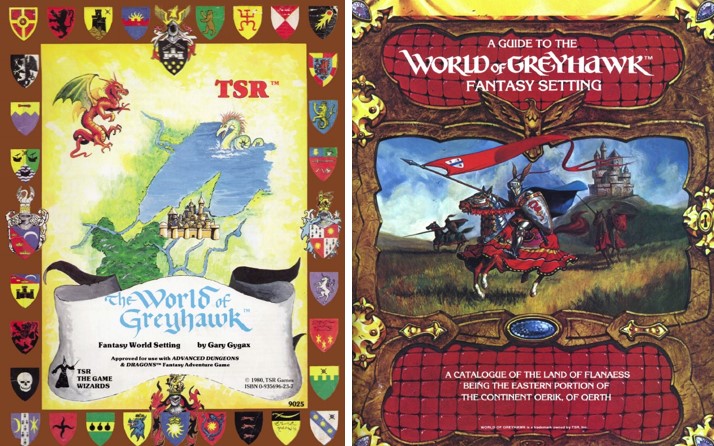
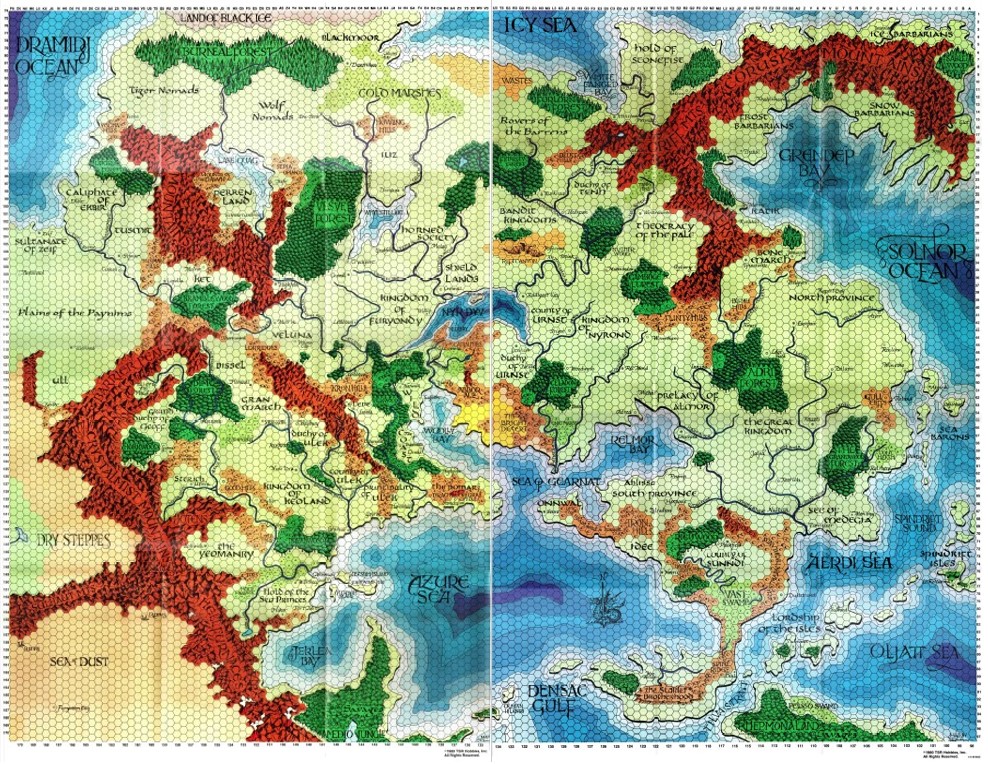

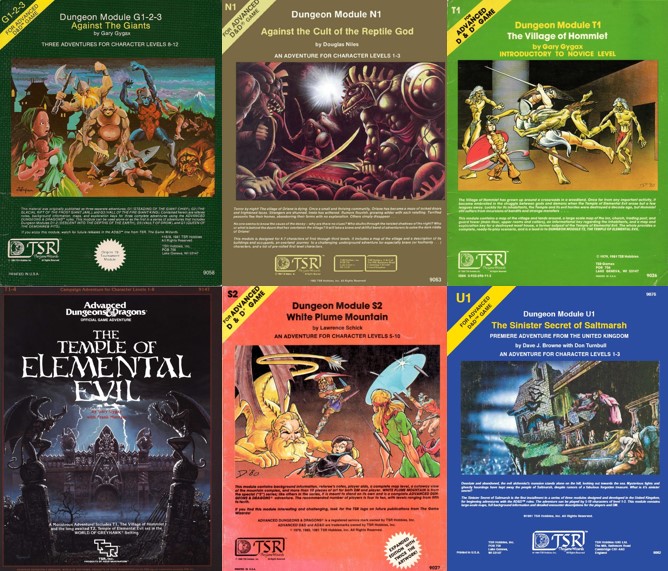
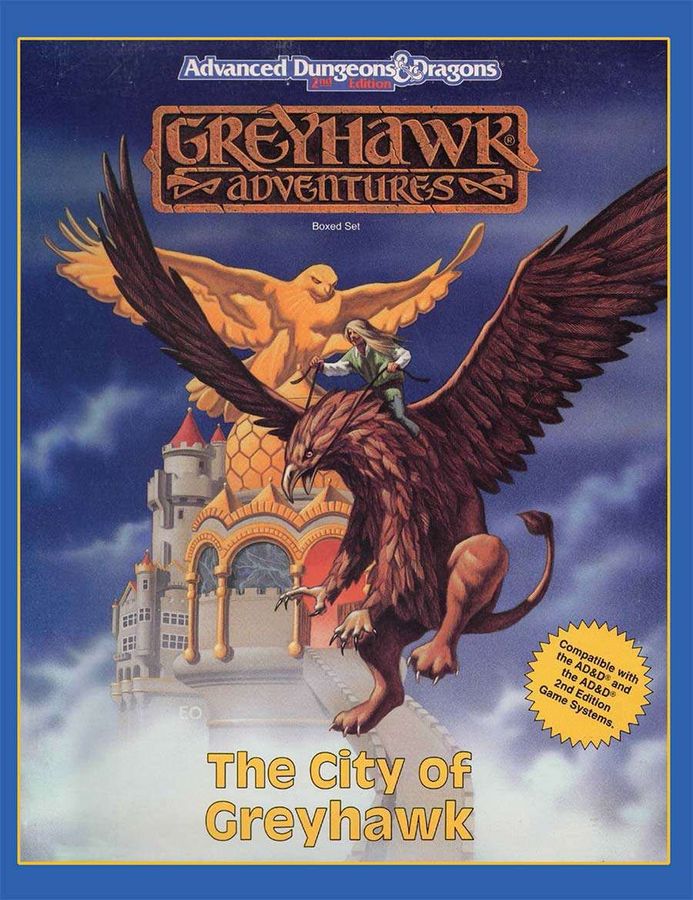
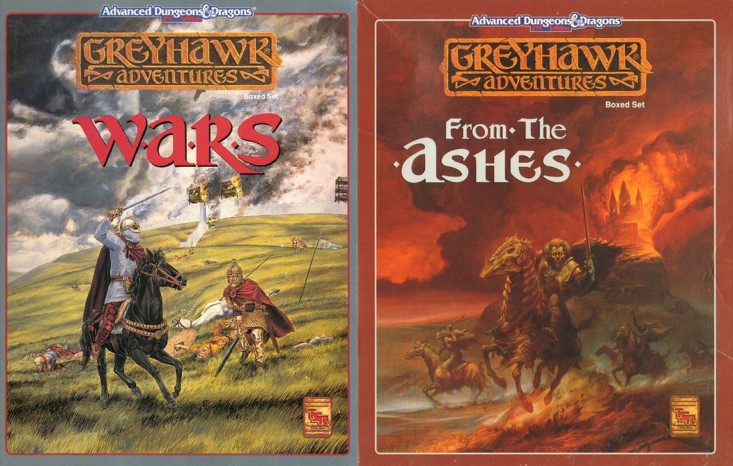

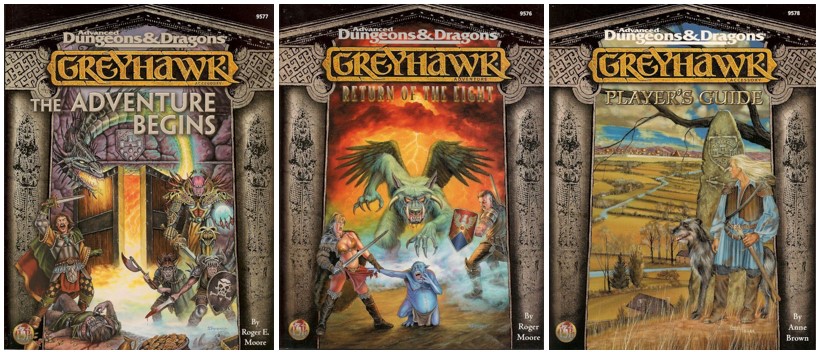
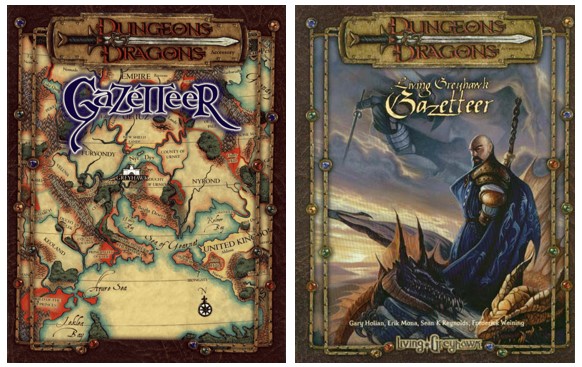
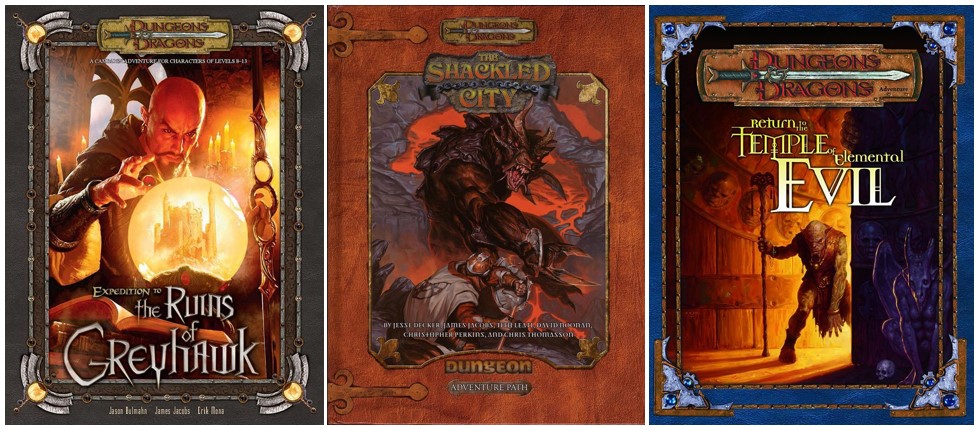
Nice article.
I wonder if Chainmail: The Sundered Empire, is supposed to be set in the year 591 CY. Icarus did tell me the Western Oerik canon was ahead of other Greyhawk material (from a time point-of-view) but I didn’t think to ask what year he was talking about.
Fantastic summary!!
Thank you so much!
Mac, You know – I didn’t even think about that book. I’ll be sure to look into it!
Thank you for sharing this overview. Greyhawk was my first setting and I spent countless hours pouring over the 1983 boxed set. I think I still have a well-worn half of the Darlene map with some markings on it for the 1e module locations. My campaign world engagement ended up getting pulled over to Krynn (and then I shifted away generally from TTRPGs for a long time) but Greyhawk still holds a special place in my heart. I feel like I missed out on some cool stuff later on but maybe I’m better off not seeing some of the back and forth with the state of the campaign setting (?). Anyway I’m one of the folks that would dig a return of the Flanaess.